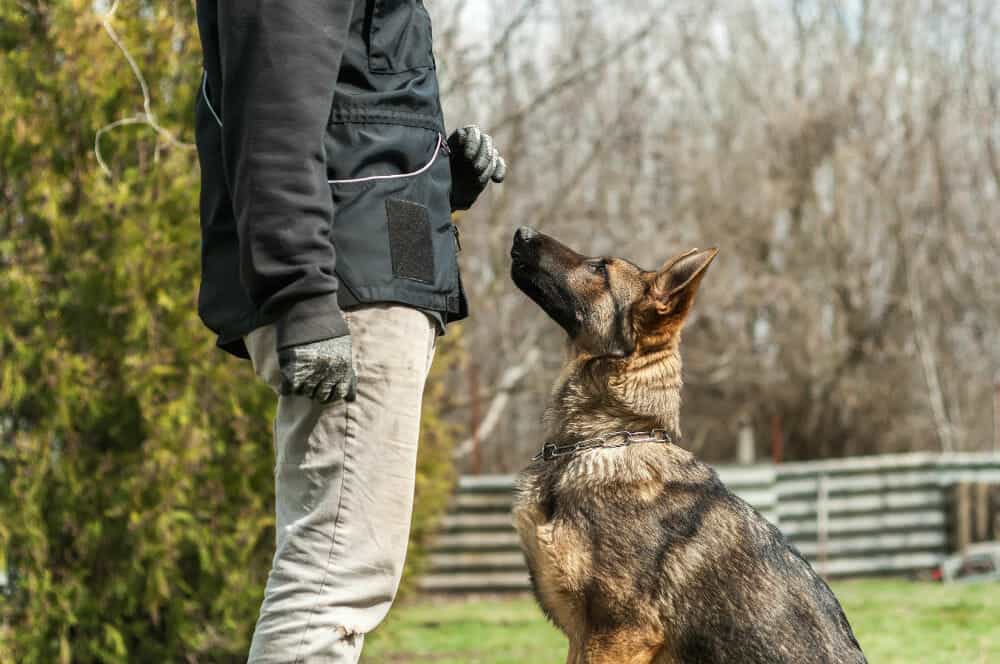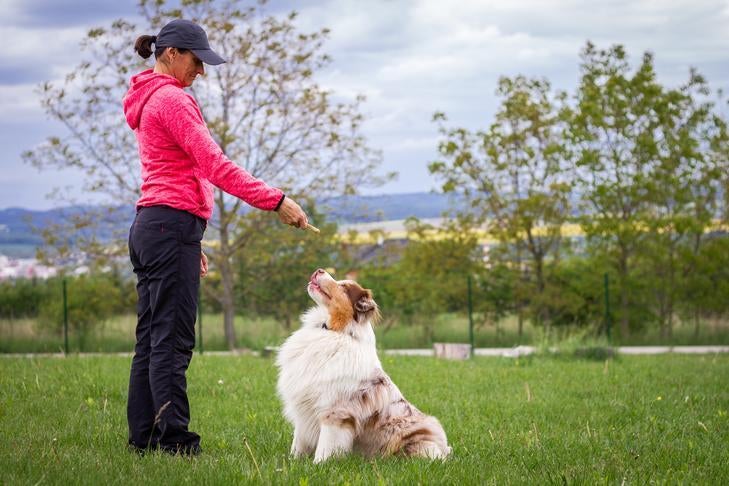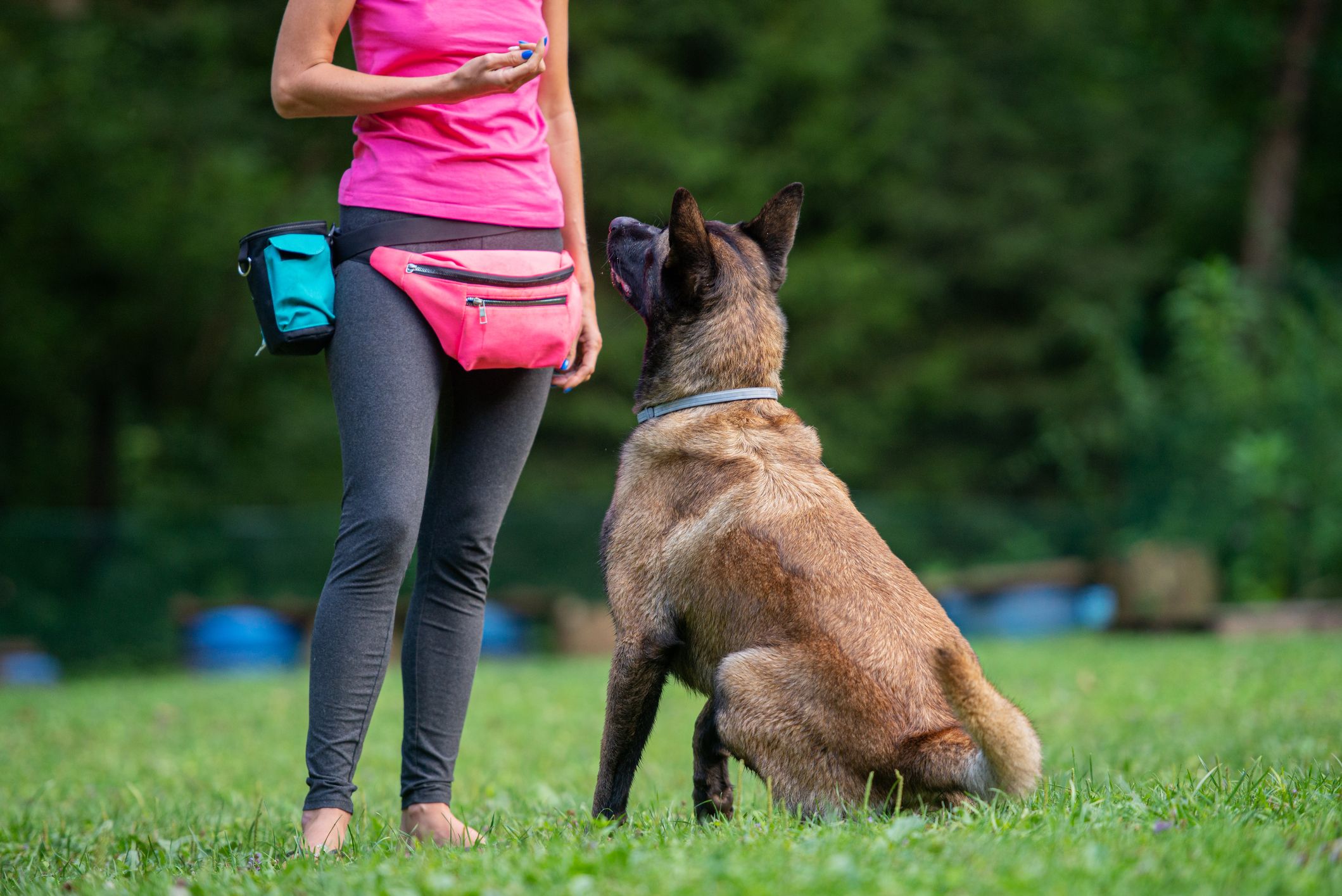Important Tips for Effective Dog Training: An Overview for Pet Owners
Reliable pet dog training is a diverse procedure that needs a strategic strategy tailored to both the pet's personality and the proprietor's objectives. Recognizing exactly how to navigate these barriers can substantially enhance the training experience, inevitably transforming the relationship in between owner and pet.
Recognizing Dog Habits
Recognizing dog behavior is important for reliable training and fostering a harmonious connection in between canines and their owners. dog training. Canines connect largely via body language, vocalizations, and actions, making it critical for proprietors to analyze these signals properly.

Socialization plays a substantial role in dog behavior; exposure to various settings, individuals, and various other pets can substantially affect a pet dog's character. Moreover, elements such as breed characteristics and individual personality need to lead training approaches, as some types may have specific behavior qualities that require tailored approaches. By comprehending these elements, proprietors can produce a supportive setting that motivates positive actions, resulting in effective training results and a deeper bond with their pet dogs.
Establishing Regular Commands
Efficient interaction with your pet dog starts with establishing constant commands. This fundamental element of training is critical for promoting understanding between you and your family pet. Consistency in the commands you utilize ensures that your pet dog can reliably connect specific words or phrases with the desired actions.
When selecting commands, select clear, distinct words that are simple to set apart and say from one an additional. Avoid utilizing similar-sounding commands that might confuse your canine. For instance, using "sit" and "remain" is appropriate, however "rest" and "struck" could cause misconceptions.
Furthermore, keep the same tone and volume for each and every command. Pets are sensitive to vocal hints, so differing your tone can develop confusion.
It is equally important to ensure that all member of the family are on the same page regarding the commands made use of. A united front in command use will prevent combined signals and enhance the discovering process.
Positive Support Strategies
The power of positive reinforcement in pet training exists in its capability to encourage wanted habits with rewards and appreciation. This method is grounded in the concept that habits followed by positive outcomes are most likely to be duplicated. By integrating positive support into your training routine, you can successfully shape your pet's habits in a constructive fashion.
To execute favorable reinforcement, it's vital to recognize what inspires your canine, whether it be deals with, toys, or spoken praise. When your pet dog performs a wanted action, such as resting on command, instantly compensate them with a treat or love. This association between the command and the favorable result reinforces their understanding.
It's important to timing the incentives correctly; supplying the reinforcement within secs of the desired habits aids your canine make the link (dog training). In addition, consistency is crucial-- ensure that all relative use the exact same commands and incentive systems to avoid confusion

Slowly, you can lower the frequency of treats as your pet dog finds out the behavior, transitioning to applaud or periodic incentives. This method not only promotes a solid bond in between you and your dog but likewise advertises a favorable learning environment, making training a satisfying experience for both.
Socialization and Communication
Consistently exposing your canine to a range of atmospheres, individuals, and various other pets is critical for their social growth. Socializing should begin early, preferably throughout the vital window of 3 to 14 weeks, when young puppies are most receptive to brand-new experiences. Nonetheless, older pet dogs can likewise benefit from continuous socializing initiatives.
Present your canine to different settings, such as parks, pet-friendly shops, and city locations. This direct exposure assists them adapt to different stimuli, decreasing anxiety and fear responses. Urge favorable communications with other canines and people, ensuring that these experiences are risk-free and controlled to promote confidence.
Use structured playdates with genteel canines, as this can enhance your pet dog's social skills and educate them proper behavior. Obedience courses and training sessions also supply outstanding possibilities for socializing, allowing your pet dog to interact with others in a monitored environment.
Screen your dog's body movement during communications, as this will certainly assist you determine their comfort degree. Gradually boost direct exposure to more tough situations while making certain that each experience declares. A well-socialized pet dog is most likely to show balanced habits, making them a pleasure to have in any setting.
Resolving Common Training Difficulties
Every pet owner will come across training challenges at some time, no matter their pet's age or socialization level. Identifying typical concerns such as stubbornness, interruptions, and terror can help in establishing efficient approaches for improvement.

Gradually present disturbances as the pet comes to be extra proficient in commands. Short, more helpful hints frequent training sessions are additionally reliable in preserving interest.
Fearfulness can impede a canine's learning procedure. Steady desensitization to the source of worry, matched with positive support, can aid minimize stress and anxiety. Patience is crucial; never ever compel a canine into a scenario that triggers distress, as this may intensify the concern.
Inevitably, understanding and resolving these typical challenges with an organized approach will promote a much more productive training experience, reinforcing the bond between pet and proprietor while promoting reliable discovering.
Conclusion
In recap, successful pet training depends on an extensive understanding of canine actions, the establishment of regular commands, and the application of positive support view it methods. Socialization plays a crucial function in developing well-adjusted family pets, while addressing typical training obstacles needs persistence and adaptability. By carrying out these important approaches, family pet owners can cultivate a solid bond with their canines and advertise desirable habits, ultimately bring about a harmonious partnership in between humans and their canine companions.
Understanding pet behavior is vital for reliable training and fostering a harmonious connection between pooches and their proprietors.Socializing plays a substantial role in canine behavior; direct exposure to numerous environments, people, and other animals can substantially influence a dog's temperament.The power of positive reinforcement in pet dog training exists in its capacity to motivate wanted actions through rewards and praise. By incorporating positive reinforcement right into your training program, you can properly form your pet's actions in a constructive manner.
In summary, successful canine training relies on an extensive understanding browse around these guys of canine habits, the facility of regular commands, and the application of favorable support methods.
Comments on “Change Your Animal with These Professional Dog Training Tips”